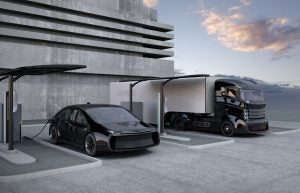 One thing is clear: The New York Public Service Commission does not shy away from a challenge. Since the Climate Leadership and Community Protection Act was adopted in 2019, setting economy-wide greenhouse gas reduction targets and directing the PSC to eliminate emissions from electric generation, the commission has been hard at work updating its programs where its role under the new law is clear, and making sense of the rest.
One thing is clear: The New York Public Service Commission does not shy away from a challenge. Since the Climate Leadership and Community Protection Act was adopted in 2019, setting economy-wide greenhouse gas reduction targets and directing the PSC to eliminate emissions from electric generation, the commission has been hard at work updating its programs where its role under the new law is clear, and making sense of the rest.
New York’s decarbonization path is nascent, particularly when it comes to eliminating pollution from activities that do not rely directly on utility systems today, but that will rely on those systems to eliminate their emissions in the future. Trucks and buses are a perfect example. These vehicles are a small slice of the transportation pie, yet they are responsible for an outsized share of the air pollution from transportation, including about half of the transportation-related nitrogen oxide and particulate matter contaminants. These pollutants cause serious health problems, like asthma — especially in communities that experience high truck traffic.
There are options for replacing diesel-fueled vehicles, especially as a range of new zero-emission vehicle models become available. And the shortest path to eliminating harmful tailpipe emissions from trucks and buses runs straight through the electric system.
New York PSC must ensure charging infrastructure in place for medium and heavy-duty fleet electrification Share on XAlready, every electric vehicle that replaces a diesel vehicle means less climate and air pollution. And as the electric grid gets cleaner over time, the emissions avoidance from electric vehicles will improve. However, this environmentally promising opportunity depends on the electric grid. As a tidal wave of new vehicles hits the market, utilities have much work to do to be well prepared for these vehicles. This shortfall must be addressed because New York adopted the Clean Truck Rule, requiring vehicle manufacturers to produce zero-emission trucks, rapidly scaling-up the ZEV trucks and buses market in the state.
That’s why, last month, EDF, along with other environmental organizations (NRDC and Sierra Club); a clean transportation advocacy organization (CALSTART); and two environmental justice advocates (WE ACT and South Bronx Unite) petitioned the PSC to prepare the utility system for zero-emission trucks and buses at the levels and speed that New York’s legislature and environmental regulator require.
At around the same time as we were filing our petition, the PSC took several meaningful steps in building a foundation for New York’s clean energy future in a series of orders. Taken together, these orders give shape to a system of regulatory oversight for both electric and gas utility systems that is increasingly aligned with the state’s environmental targets established in the CLCPA, directing the creation of reasonably transparent processes for evaluating emissions performance and identifying where course corrections may be needed. However, the new orders avoid seriously examining how the utilities’ systems will keep pace with the movement away from fossil fuels in other sectors, such as truck and buses.
This puts the commission’s approach to evaluating utilities’ alignment with the CLCPA out of step with reality, because electric utilities might be delivering primarily low-carbon power to current customers while being unprepared to plug in large numbers of trucks and buses and charge them efficiently. Zero-emission trucks and buses can already outperform certain fossil-fueled vehicle types and duty cycles, and leading fleets such as MTA’s New York City Transit, the largest bus fleet in the country, have already announced plans to transition away from diesel. In fact, growing demand for charging zero-emission trucks and buses is part of the reason why Con Edison is now seeking, after a decade of successfully deploying efficiency and demand management to avoid needing a new substation along the Brooklyn-Queens border, to construct a new substation to meet this need.
The drumbeat of parties demanding that PSC bridge the zero-emission truck and bus charging gap is picking up strength and urgency. Since our petition, numerous letters of support have been filed in the record, representing the perspectives of clean energy advocates (Advanced Energy Economy, Alliance for Clean Energy New York, and the Acadia Center); manufacturers (including Proterra, Volvo, and Daimler North America, among others); and a vehicle-grid integration company (Nuuve).
The PSC must recognize that the transition to zero-emission medium- and heavy-duty vehicles is already underway and that these vehicles will eventually need a significant amount of generation and other electric infrastructure. This means that system planning must account for the need to charge them, including the need for more distribution grid capacity and additional renewables. Moreover, getting ahead of the rapid vehicle deployments can help support the overall energy transition, because with smart design, truck and bus charging can help meet some other challenges — like providing a cost-effective alternative to standalone battery storage and helping more renewables come online with better economics.
None of this is easy — and the PSC knows that. But working with utilities to ensure that adequate charging for trucks and buses comes online when we need it, all while maximizing reliance on renewables, is something the PSC can, and should, do right.









